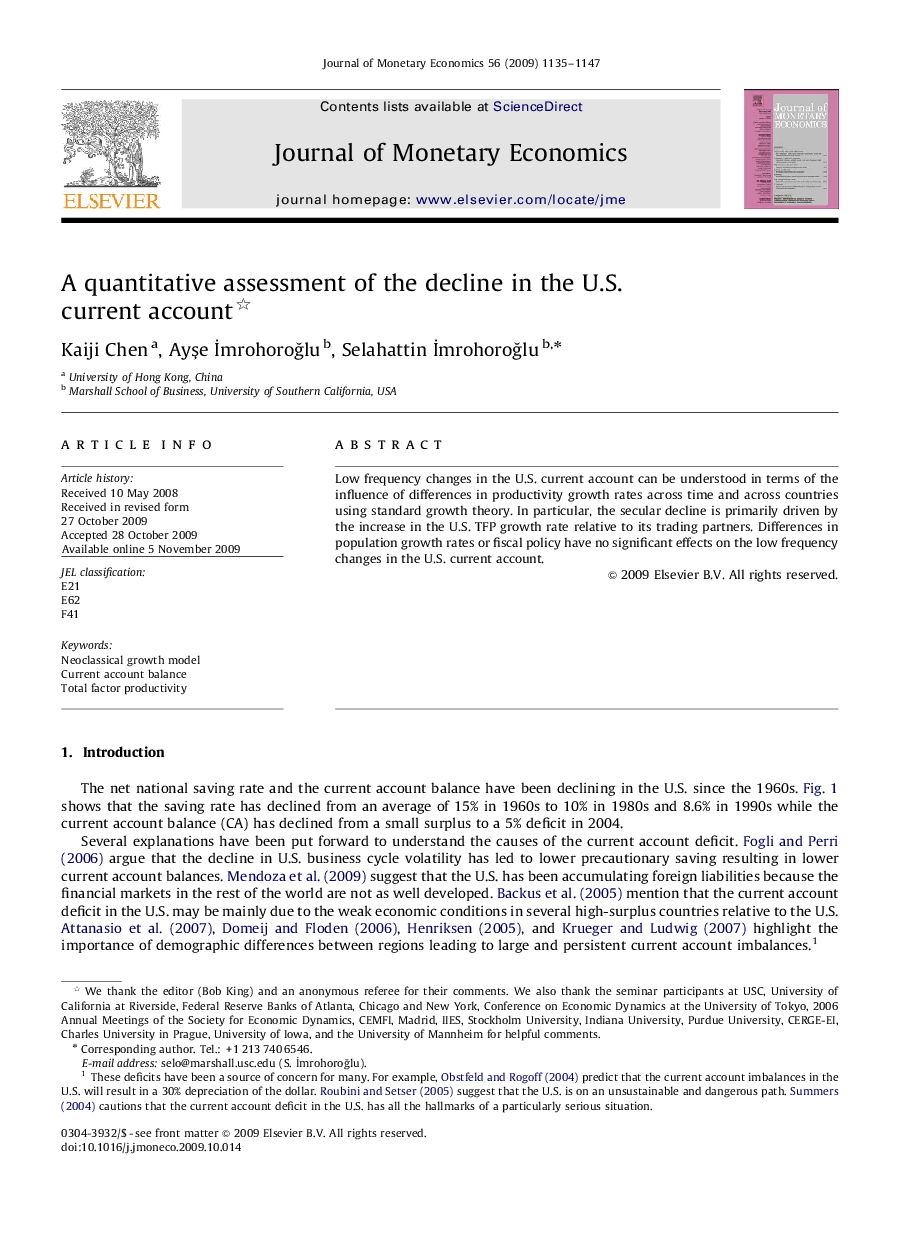| Article ID | Journal | Published Year | Pages | File Type |
|---|---|---|---|---|
| 967085 | Journal of Monetary Economics | 2009 | 13 Pages |
Abstract
Low frequency changes in the U.S. current account can be understood in terms of the influence of differences in productivity growth rates across time and across countries using standard growth theory. In particular, the secular decline is primarily driven by the increase in the U.S. TFP growth rate relative to its trading partners. Differences in population growth rates or fiscal policy have no significant effects on the low frequency changes in the U.S. current account.
Related Topics
Social Sciences and Humanities
Economics, Econometrics and Finance
Economics and Econometrics
Authors
Kaiji Chen, AyÅe Ä°mrohoroÄlu, Selahattin Ä°mrohoroÄlu,
